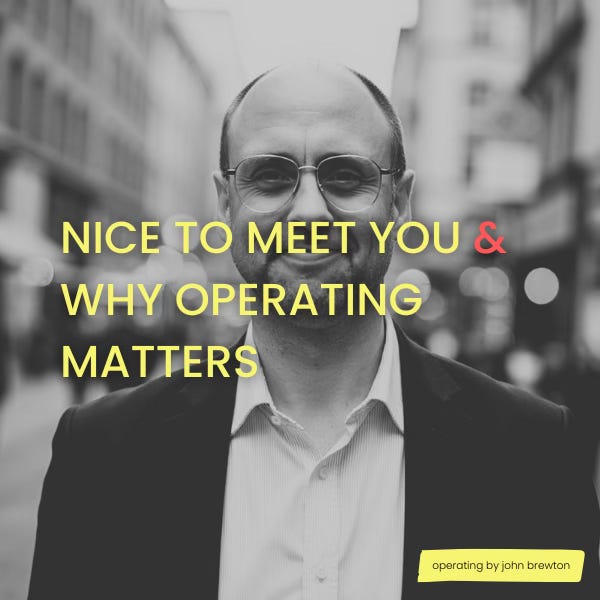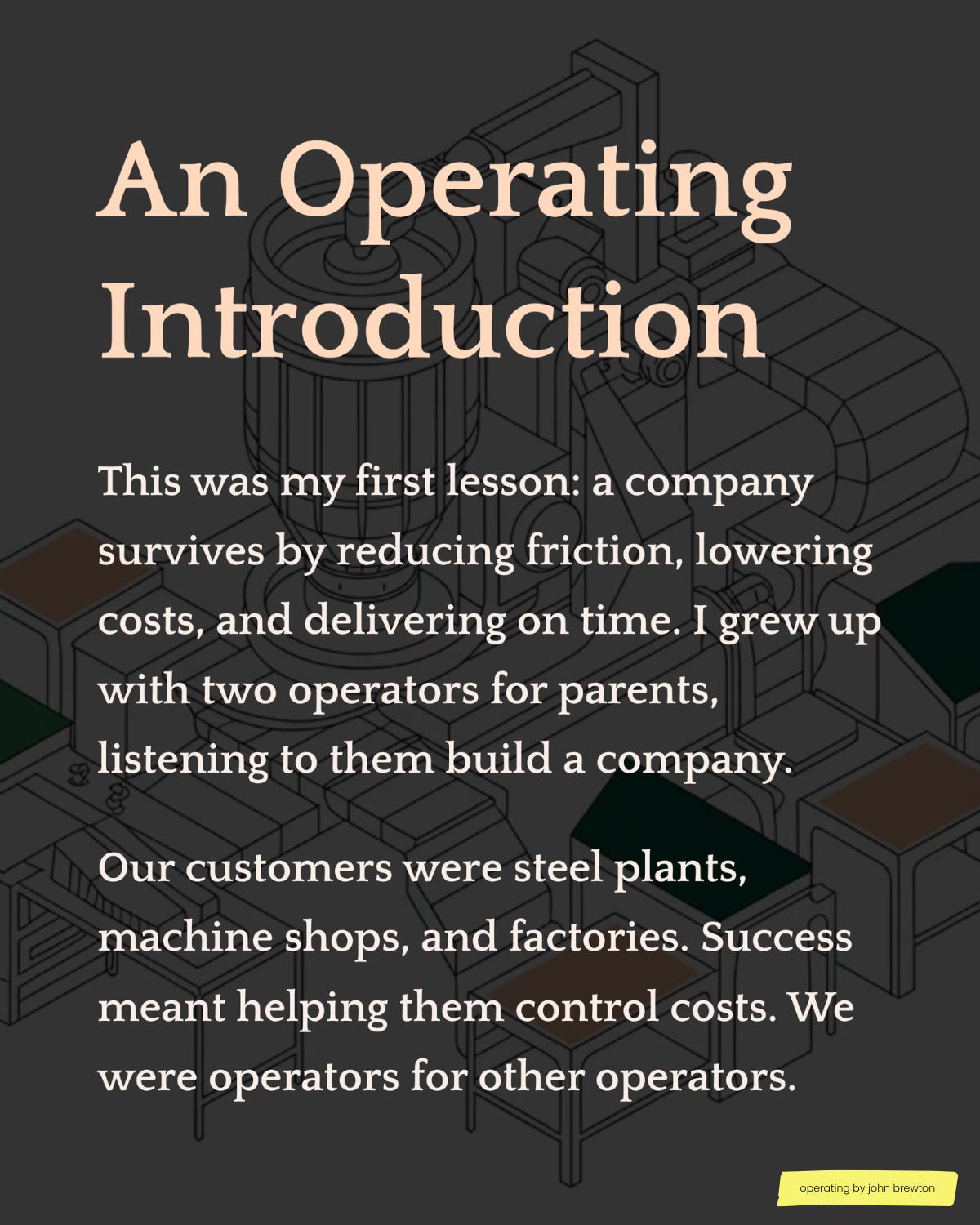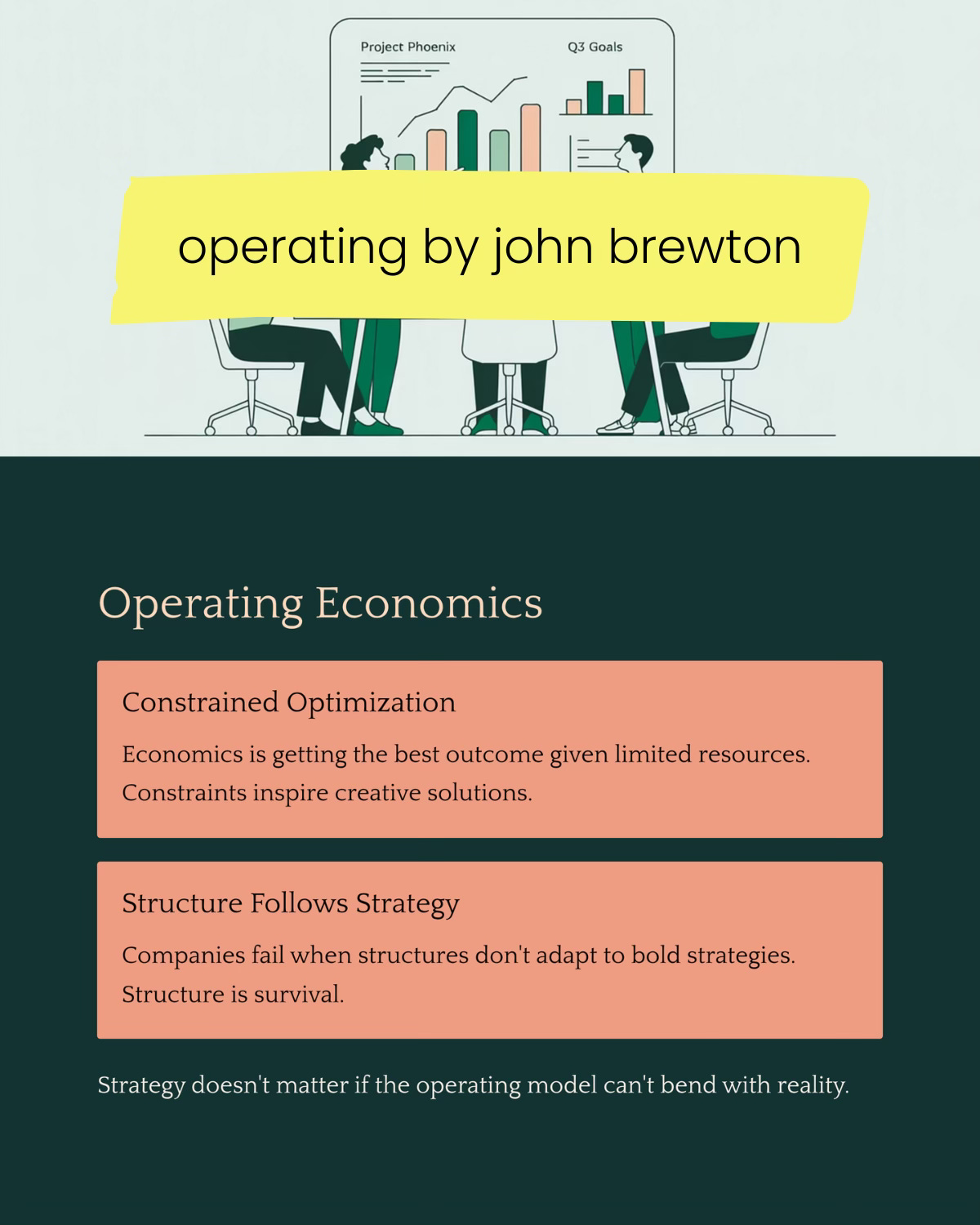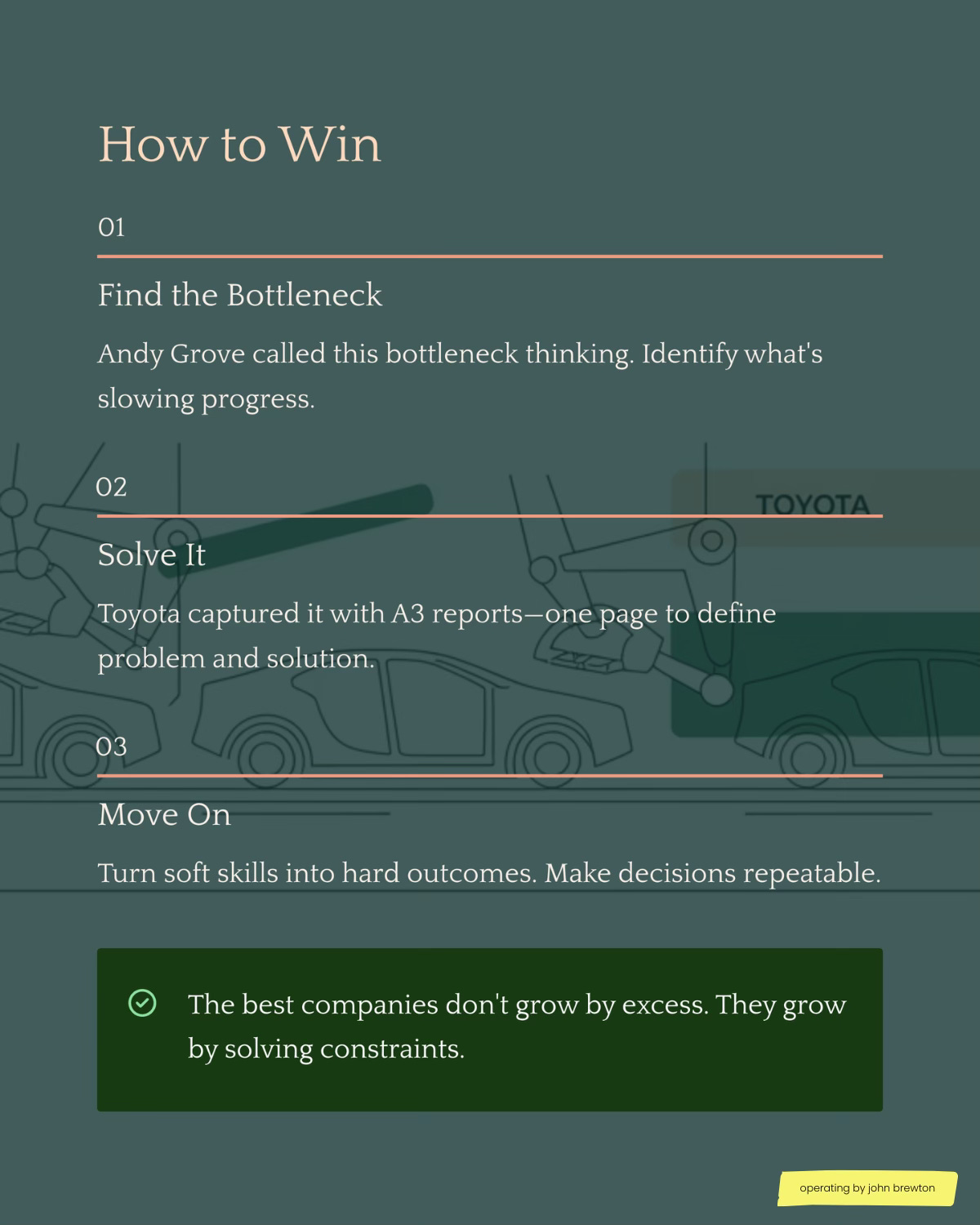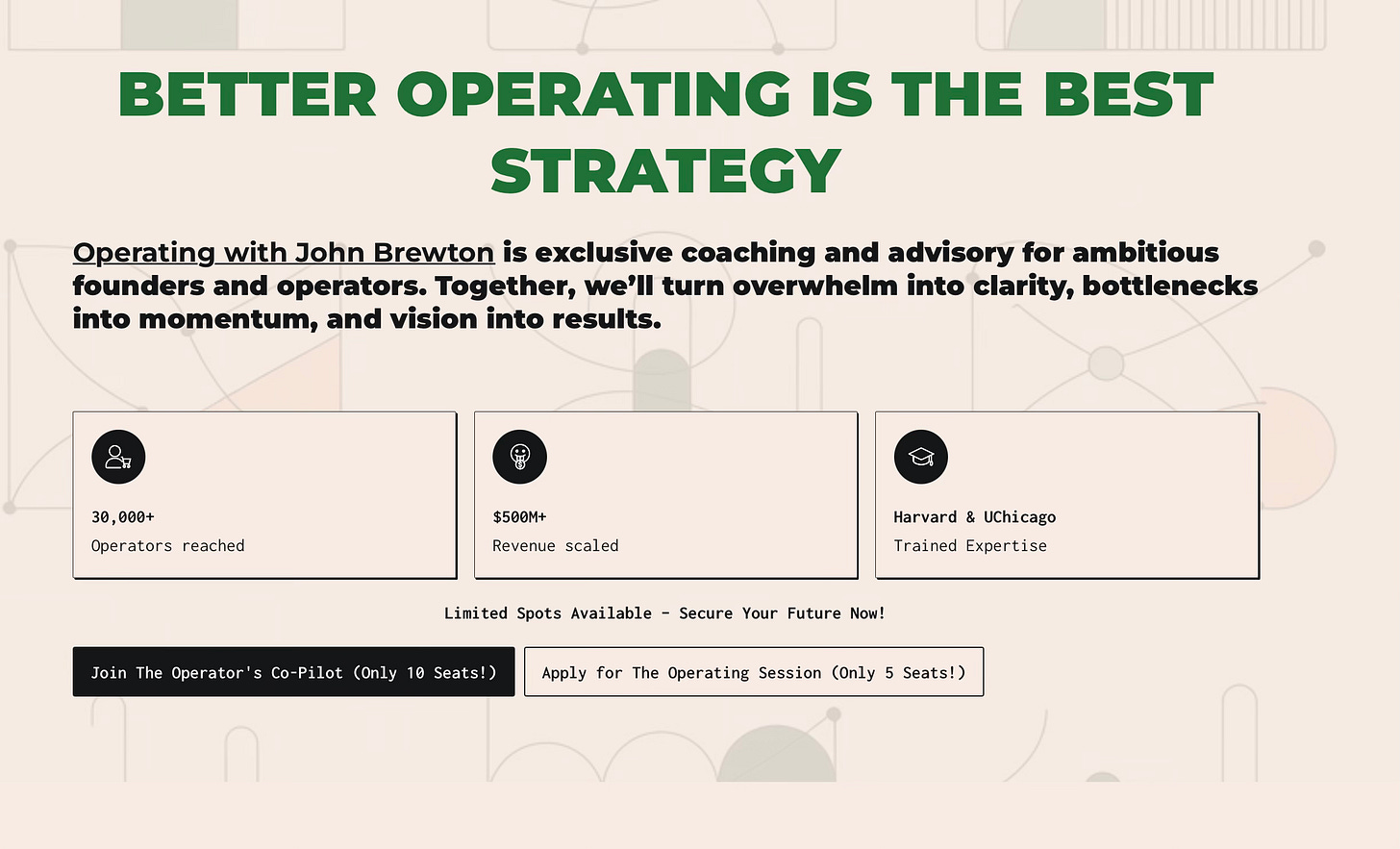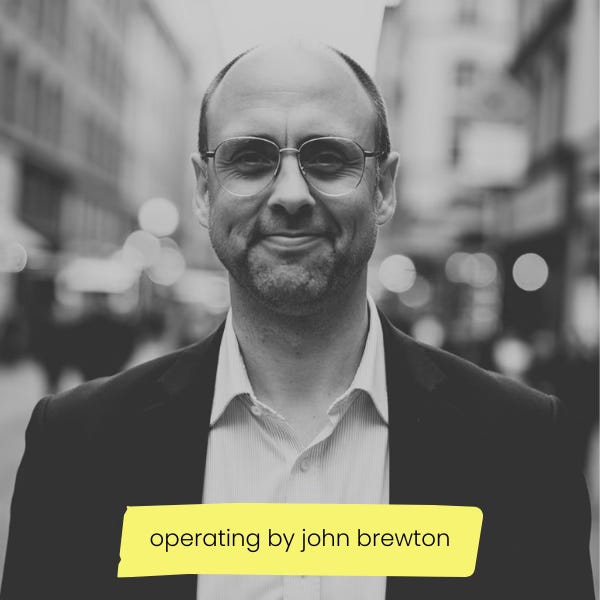New to Operating? Check out these reader favorites:
Operating Introduction
My grandfather started by selling abrasives—grinding wheels and sandpaper. My father added cutting tools, coolants and lubricants in the mid-1980s. In the late 1990s, my folks made the jump into an entirely new market, Automated Inventory Management (vending machines, lockers, RFID portals). We tracked every piece of tooling in the plants, ideally aligning the total inventory they purchased to the rhythms of their production schedules. It was a solid, cost savings proposition and the quality of our teams’ execution helped us grow.
We were operators for other operators. If a plant shut down because we missed a delivery, a contract renewal could be up for grabs. That meant late-night drives that ended at dawn in a factory parking lot. It meant watching cash closely, stretching working capital, and solving small problems before they multiplied. To help clients operate better, we had to do the same.
A company survives by reducing friction, lowering costs, and delivering on time. Ronald Coase wrote that firms exist because they make coordination cheaper than the market. Better operating keeps the cost of coordination moving in the right direction. It keeps companies alive.
Operating Economics
I discovered economics in college. It immediately made sense. Economics is the study of constrained optimization, how to get the best outcome given limited resources. I saw this idea as a framework for most everything.
Efficiency wasn’t dull, it generated more time to do more, new things. Constraints were the source of creative inspiration. Teams that focused on doing things faster and better became collaborative, inventive, and resilient. I saw this dynamic in the books I read, the memories I kept, and in the normal weekly cadence of my work and reading. Having a clear way of trying to understand the world meant a great deal.
Alfred Chandler said structure follows strategy. He was right, but incomplete. I saw companies on the front pages of the Wall Street Journal and Financial Times because their structures didn’t adapt to their bold strategies. In my professional life, I learned how companies restructure to stay lean, cutting layers to remain competitive. Structure is survival. Strategy doesn’t matter if the operating model can’t bend with reality.
How to Win
While studying for my Phd, I took a year to help improve the operations of the distribution company. One year turned into thirteen. It was an unexpected sidestep, but it felt natural. It was time to apply all my learning.
No matter what changes in a business—customer demands, supplier price hikes, market swings—the best move was almost always to operate better. Find the bottleneck, solve it, move on. Andy Grove called this bottleneck thinking. Toyota captured it with A3 reports—one page to define the problem and solution. Bridgewater built radical transparency, recording meetings and codifying decisions so lessons weren’t lost.
These systems turned soft skills like listening, documenting, and trust building into hard outcomes. They absorbed bias and fear, making decisions repeatable. That’s why efficiency is creative. Constraints don’t limit teams. They force collaboration, urgency, and problem-solving. The best companies don’t grow by excess. They grow by solving constraints.
Winning companies maintain extraordinary discipline around simple operating mechanisms. They are disciplined in how they solve for the immediate problems, and in how they review the results of those efforts the following Monday morning. They hold individuals and teams accountable. They are in a state of continuous change and constant improvement. Winning companies focus incessantly on how to operate better.
Operating better is how you reduce cost, build more creative teams, develop the most unique solutions, become more profitable in a down market, and cut your overhead while growing your top line revenue when times are good.
Operating better is the how your company wins financially.
Macro Operating
Families and communities endure the same way. My wife and I think about life like I think about business: each commitment should support the whole. Sustainability, reciprocity, and clarity matter everywhere—at home, at work, with friends.
This perspective shapes how I coach and hire. I look for people who listen, who collaborate under constraint, who keep promises. Value comes from reliability. Culture is a byproduct urgency. Creativity comes from limits, not abundance.
The companies racing for AI supremacy know this. Their biggest concern isn’t the models but the people they need to hire to build the models and applications that will transform the future of companies and commerce. They’re spending billions to acquire teams, not products. The most important features remain the ability to build, adapt, and deliver. Better operating remains the executing variable.
Operating Takeaways
Efficiency is creative
The best companies solve for their constraints
Teams make companies collaborative, inventive, and resilient.
Culture is a byproduct of urgency
Great operations enable great strategy
Better operating is how you win
If you’d like to work together, I’ve carved out some time to work 1:1 each month with a few, top notch Founders and Operators. You can find the details here.
John Brewton documents the history and future of operating companies at Operating by John Brewton. He is a graduate of Harvard University and began his career as a Phd. student in economics at the University of Chicago. After selling his family’s B2B industrial distribution company in 2021, he has been helping business owners, founders and investors optimize their operations ever since. He is the founder of 6A East Partners, a research and advisory firm asking the question: What is the future of companies? He still cringes at his early LinkedIn posts and loves making content each and everyday, despite the protestations of his beloved wife, Fabiola, at times.


